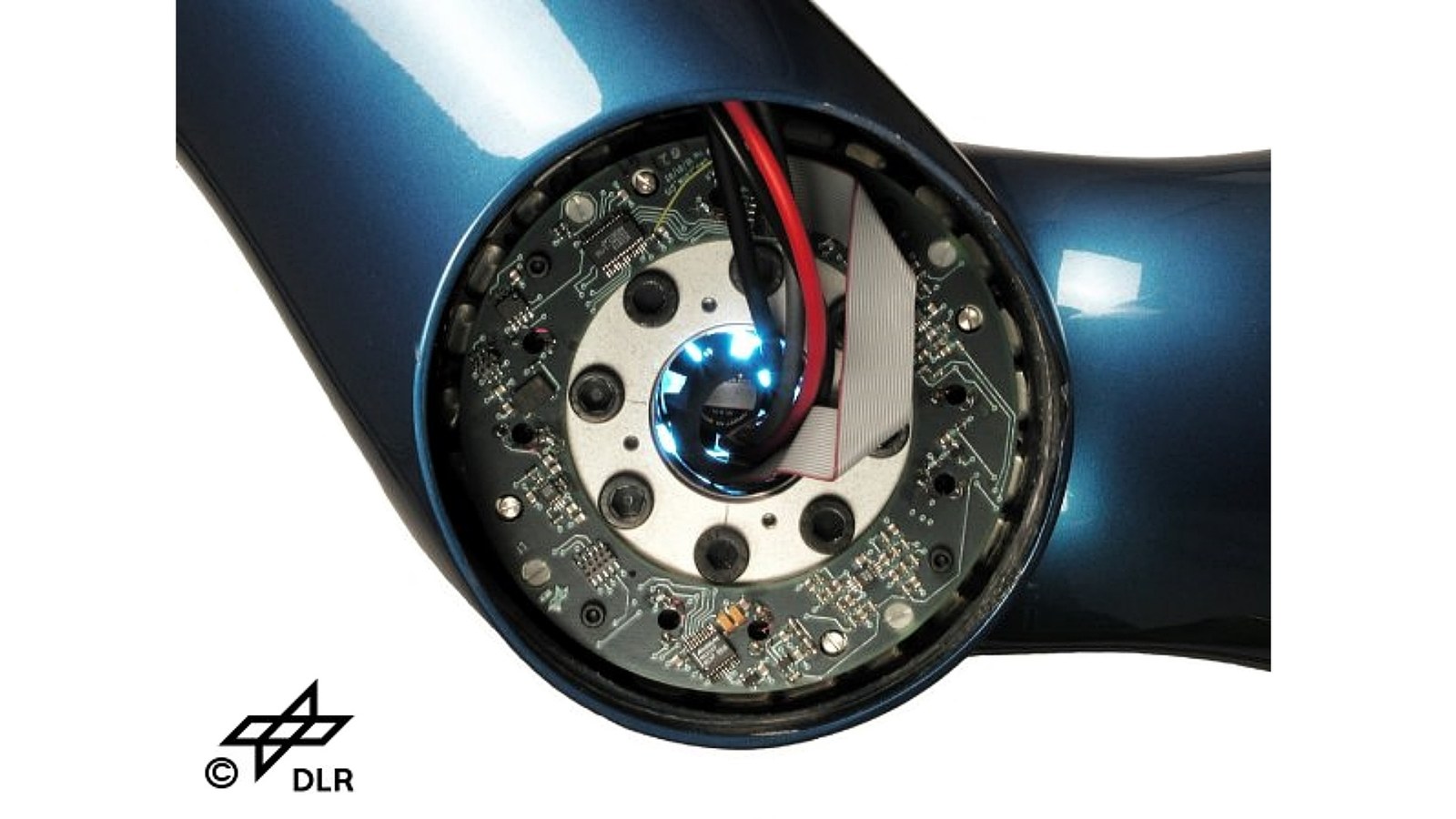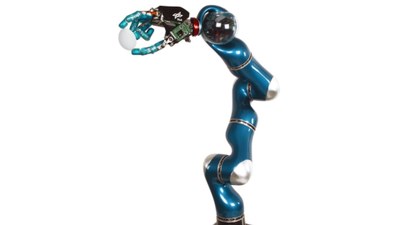LWR III
The DLR Light Weight Robot III (LWR III) is a light-weight robot with seven degrees of freedom, which was in 2003 presented to the public for the first time.
Technical data
Size: | Maximum reach 936 mm |
Weight: | 14 kg |
Degrees of freedom: | 7 (R - P - R - P - R - P - P) |
Maximum Payload: | 14 kg |
Max. joint speed: | 120°/s |
Control modes: | Position-, Torque-, Impedance Control |
Specifics: |
|
System description
The DLR Light Weight Robot III (LWR III) represents the third generation of light-weight robots developed at the DLR Institute of Robotics and Mechatronics. Like its predecessors it has an outstanding load-to-weight ratio. The robot weighs just 14 kg and is able to handle loads up to 14 kg. Thereby it has turned the dream of a robot with a load to weight ratio of at least 1:1 into reality. The usage of Harmonic Drive gears, of Robodrive ILM motors with high power density and of light materials, as well as a consequent light-weight oriented mechanical design were key issues in reaching this goal.
Similar to the human arm, the robot has seven degrees of freedom which results in advanced flexibility in comparison to standard industrial robots. The individual joints are mechanically connected via carbon-fiber structures and communicate via a fiber optical SERCOS bus system. The innovative hand-axis design enables the configuration as pitch-pitch as well as pitch-roll unit. The electronics, including the power converters, the power cables and the communication bus system, is integrated into the robot arm. Neither a bulky external rack, known from standard systems, nor external cabling is needed.







